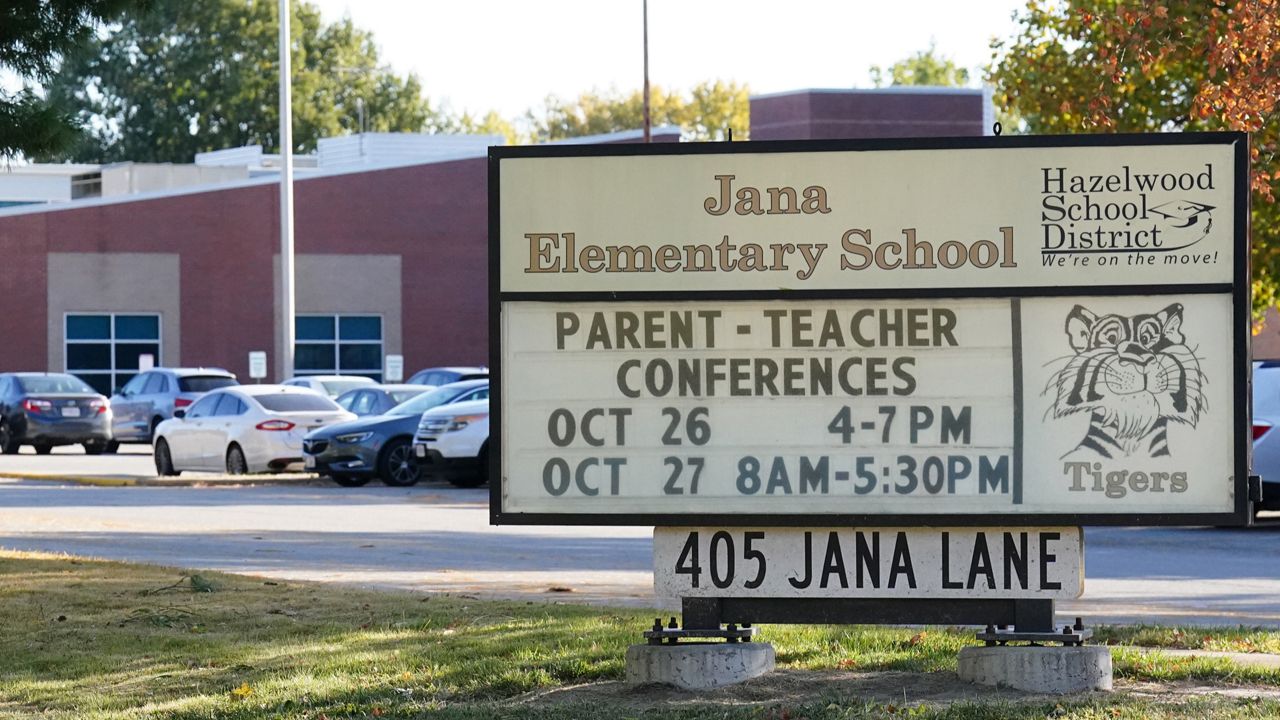ST. LOUIS — The U.S. Army Corps of Engineers on Wednesday told the Hazelwood School District that prelimiinary findings of recent testing done at Jana Elementary indicate from a “radiological standpoint the school is safe,” despite concerns from school board members and others who say the proof is in data that hasn't been released to the public.
The Army Corps tests came after samples taken in August by a Massachussetts firm said they found "significant radioactive contamination" at the school located in the Coldwater Creek floodplain. The Coldwater Creek floodplain was contaminated by Manhattan Project-era atomic waste and has been the site of a federal cleanup effort dating back thirty years.
Students and staff were removed from the building and have been learning virtually. They are supposed to be relocated to other district buildings later this month.
During a special meeting of the district's Board of Education Wednesday, representatives for the Army Corps of Engineers didn't present specific data points of their own, saying that detail would be available in January. Without going point by point, the Army Corps said it disagreed with the findings brought by the Boston Chemical study.
"We have tried and true processes that we follow. We make sure that we are diligent in our process and the actual evaluations associated with the data and it was not consistent with the way we do our evaluation," Phil Moser, an Army Corps Project Manager told the board.
The Army Corps said its results "are legitimate findings that can be repeated."
Marco Kaltofen, the Boston Chemical Corp. investigator who authored the study released in October showing the contamination, was at the meeting and afterward told Spectrum News he didn't question the Corps' competency in doing the testing, but that he'd like for the agency's data to speak for itself. Ideally, he said, the two parties would work together.
"Rather than having the army corps opine that they did more samples than us and that they’re very competent, none of which I disagree with, I’d rather we were working together on the same page. I think that we are using scientific methodologies that are accepted for professional work in this field but they are not the same and I think why not take the best of what both of us are doing and come up with something that’s protective of the children and the staff at school," Kaltofen said.
At least some board members were skeptical of the government's preliminary presentation.
"You gave me no numbers to fight with. You gave me nothing. You say your report is comprehensive. But you can make that say anything without numbers," said board member Sylvester Taylor, who worried both studies are biased. "If you don’t want us to jump to conclusions than why have this dog and pony show and give it to us when you’re gonna give it to us?"
Another board member said just the suspicion of the building's safety is enough to make sure that "we're not volleying the ball for years to come."
After the Boston Chemical report was released in October, the state's congressionald delegation in Washington called for a swift federal cleanup of the site, with the potential for a new school if necessary. The Army Corps said it has proposed cleanup of the Coldwater Creek bank near the school but not on school property, for next summer. Representatives have said they don't have evidence that contamination in the creek has migrated to the building.
Other board members shared Taylor's concern about the lack of Army Corps data, but stopped short of saying more drastic action is necessary.
"Your coming has given me a sense of we may be looking at something that is not as critical as we thought," Board member Margo McNeil said.
Coldwater Creek was contaminated in the 1940s and 1950s when waste from atomic bomb material manufactured in St. Louis got into the waterway near Lambert Airport, where the waste was stored. The result was an environmental mess that resulted in a Superfund declaration in 1989.
The site near the airport has largely been cleaned up but remediation of the creek itself won’t be finished until 2038, Corps officials have said.
Children have often played in the creek, and a 2019 federal report determined that those exposed to the waterway from the 1960s to the 1990s may have an increased risk of bone cancer, lung cancer and leukemia. Environmentalists and area residents have cited several instances of extremely rare cancers that have sickened and killed people.
The next Hazelwood School Board meeting is Nov. 15 at 6:30pm at the HSD Learning Center (15955 New Halls Ferry Road, Florissant, MO 63031). A forum sponsored by the Jana Elementary Parent Teacher Association and the NAACP that will address the history of Coldwater Creek is scheduled for the same time at Trinity Church (3515 Shackelford Rd, Florissant 63031).
The Associated Press contributed reporting for this story






